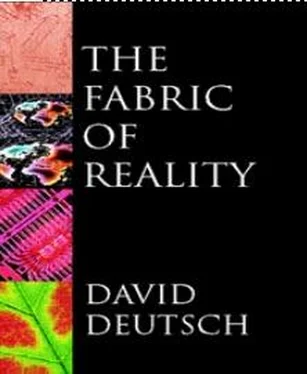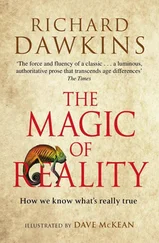David Deutch - The Fabric of Reality
Здесь есть возможность читать онлайн «David Deutch - The Fabric of Reality» весь текст электронной книги совершенно бесплатно (целиком полную версию без сокращений). В некоторых случаях можно слушать аудио, скачать через торрент в формате fb2 и присутствует краткое содержание. ISBN: , Жанр: Физика, Философия, на английском языке. Описание произведения, (предисловие) а так же отзывы посетителей доступны на портале библиотеки ЛибКат.
- Название:The Fabric of Reality
- Автор:
- Жанр:
- Год:неизвестен
- ISBN:0-7139-9061-9
- Рейтинг книги:4 / 5. Голосов: 2
-
Избранное:Добавить в избранное
- Отзывы:
-
Ваша оценка:
- 80
- 1
- 2
- 3
- 4
- 5
The Fabric of Reality: краткое содержание, описание и аннотация
Предлагаем к чтению аннотацию, описание, краткое содержание или предисловие (зависит от того, что написал сам автор книги «The Fabric of Reality»). Если вы не нашли необходимую информацию о книге — напишите в комментариях, мы постараемся отыскать её.
The Fabric of Reality — читать онлайн бесплатно полную книгу (весь текст) целиком
Ниже представлен текст книги, разбитый по страницам. Система сохранения места последней прочитанной страницы, позволяет с удобством читать онлайн бесплатно книгу «The Fabric of Reality», без необходимости каждый раз заново искать на чём Вы остановились. Поставьте закладку, и сможете в любой момент перейти на страницу, на которой закончили чтение.
Интервал:
Закладка:
Whenever I have used Dr Johnson’s criterion to argue for the reality of something, one attribute in particular has always been relevant, namely complexity. We prefer simpler explanations to more complex ones. And we prefer explanations that are capable of accounting for detail and complexity to explanations that can account only for simple aspects of phenomena. Dr Johnson’s criterion tells us to regard as real those complex entities which, if we did not regard them as real, would complicate our explanations. For instance, we must regard the planets as real, because if we did not we should be forced into complicated explanations of a cosmic planetarium, or of altered laws of physics, or of angels, or of whatever else would, under that assumption, be giving us the illusion that there are planets out there in space.
Thus the observed complexity in the structure or behaviour of an entity is part of the evidence that that entity is real. But it is not sufficient evidence. We do not, for example, deem our reflections in a mirror to be real people. Of course, illusions themselves are real physical processes. But the illusory entities they show us need not be considered real, because they derive their complexity from somewhere else. They are not autonomously complex. Why do we accept the ‘mirror’ theory of reflections, but reject the ‘planetarium’ theory of the solar system? It is because, given a simple explanation of the action of mirrors, we can understand that nothing of what we see in them genuinely lies behind them. No further explanation is needed because the reflections, though complex, are not autonomous — their complexity is merely borrowed from our side of the mirror. That is not so for planets. The theory that the cosmic planetarium is real, and that nothing lies beyond it, only makes the problem worse. For if we accepted it, then instead of asking only how the solar system works we should first have to ask how the planetarium works, and then how the solar system it is displaying works. We could not avoid the latter question, and it is effectively a repetition of what we were trying to answer in the first place. Now we can rephrase Dr Johnson’s criterion thus:
If, according to the simplest explanation, an entity is complex and autonomous, then that entity is real.
Computational complexity theory is the branch of computer science that is concerned with what resources (such as time, memory capacity or energy) are required to perform given classes of computations. The complexity of a piece of information is defined in terms of the computational resources (such as the length of the program, the number of computational steps or the amount of memory) that a computer would need if it was to reproduce that piece of information. Several different definitions of complexity are in use, each with its own domain of applicability. The exact definitions need not concern us here, but they are all based on the idea that a complex process is one that in effect presents us with the results of a substantial computation. The sense in which the motion of the planets ‘presents us with the results of a substantial computation’ is well illustrated by a planetarium. Consider a planetarium controlled by a computer which calculates the exact image that the projectors should display to represent the night sky. To do this authentically, the computer has to use the formulae provided by astronomical theories; in fact the computation is identical to the one that it would perform if it were calculating predictions of where an observatory should point its telescopes to see real planets and stars. What we mean by saying that the appearance of the planetarium is ‘as complex’ as that of the night sky it depicts is that those two computations — one describing the night sky, the other describing the planetarium — are largely identical. So we can re-express Dr Johnson’s criterion again, in terms of hypothetical computations:
If a substantial amount of computation would be required to give us the illusion that a certain entity is real, then that entity is real.
If Dr Johnson’s leg invariably rebounded when he extended it, then the source of his illusions (God, a virtual-reality machine, or whatever) would need to perform only a simple computation to determine when to give him the rebounding sensation (something like ‘if leg-is-extended then rebound …’). But to reproduce what Dr Johnson experienced in a realistic experiment it would be necessary to take into account where the rock is, and whether Dr Johnson’s foot is going to hit or miss it, and how heavy, how hard and how firmly lodged it is, and whether anyone else has just kicked it out of the way, and so on — a vast computation.
Physicists trying to cling to a single-universe world-view sometimes try to explain quantum interference phenomena as follows: ‘No shadow photons exist,’ they say, ‘and what carries the effect of the distant slits to the photon we see is — nothing. Some sort of Action at a distance (as in Newton’s law of gravity) simply makes photons change course when a distant slit is opened.’ But there is nothing ‘simple’ about this supposed action at a distance. The appropriate physical law would have to say that a photon is affected by distant objects exactly as if something were passing through the distant gaps and bouncing off the distant mirrors so as to intercept that photon at the right time and place. Calculating how a photon reacts to these distant objects would require the same computational effort as working out the history of large numbers of shadow photons. The computation would have to work its way through a story of what each shadow photon does: it bounces off this, is stopped by that, and so on. Therefore, just as with Dr Johnson’s rock, and just as with Galileo’s planets, a story that is in effect about shadow photons necessarily appears in any explanation of the observed effects. The irreducible complexity of that story makes it philosophically untenable to deny that the objects exist.
The physicist David Bohm constructed a theory with predictions identical to those of quantum theory, in which a sort of wave accompanies every photon, washes over the entire barrier, passes through the slits and interferes with the photon that we see. Bohm’s theory is often presented as a single-universe variant of quantum theory. But according to Dr Johnson’s criterion, that is a mistake. Working out what Bohm’s invisible wave will do requires the same computations as working out what trillions of shadow photons will do. Some parts of the wave describe us, the observers, detecting and reacting to the photons; other parts of the wave describe other versions of us, reacting to photons in different positions. Bohm’s modest nomenclature — referring to most of reality as a ‘wave’ — does not change the fact that in his theory reality consists of large nets of complex entities, each of which can perceive other entities in its own set, but can only indirectly perceive entities in other sets. These sets of entities are, in other words, parallel universes.
I have described Galileo’s new conception of our relationship with external reality as a great methodological discovery. It gave us a new, reliable form of reasoning involving observational evidence. That is indeed one aspect of his discovery: scientific reasoning is reliable, not in the sense that it certifies that any particular theory will survive unchanged, even until tomorrow, but in the sense that we are right to rely on it. For we are right to seek solutions to problems rather than sources of ultimate justification. Observational evidence is indeed evidence, not in the sense that any theory can be deduced, induced or in any other way inferred from it, but in the sense that it can constitute a genuine reason for preferring one theory to another.
Читать дальшеИнтервал:
Закладка:
Похожие книги на «The Fabric of Reality»
Представляем Вашему вниманию похожие книги на «The Fabric of Reality» списком для выбора. Мы отобрали схожую по названию и смыслу литературу в надежде предоставить читателям больше вариантов отыскать новые, интересные, ещё непрочитанные произведения.
Обсуждение, отзывы о книге «The Fabric of Reality» и просто собственные мнения читателей. Оставьте ваши комментарии, напишите, что Вы думаете о произведении, его смысле или главных героях. Укажите что конкретно понравилось, а что нет, и почему Вы так считаете.












